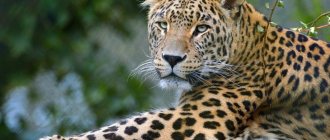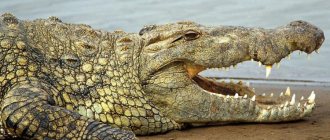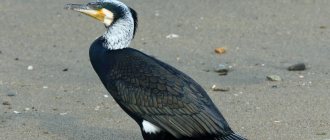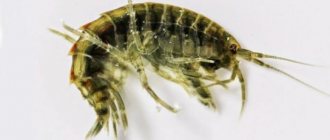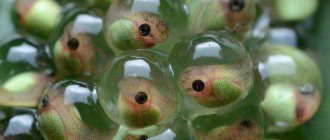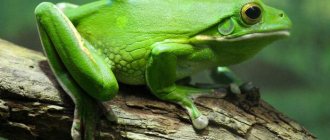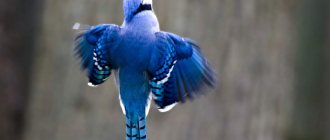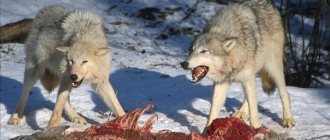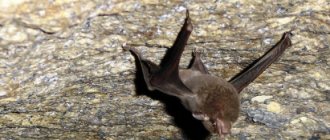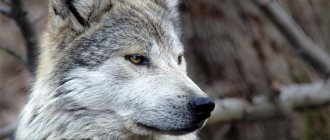Jays are a fairly common species of birds. Today there are forty-four species of these birds. All of them belong to the Corvidae family, the order of passerines. It is likely that somewhere there are species of these birds still unknown to ornithologists.
The blue jay bird is one of the most elegant among the representatives of its family, because it has a bright cover on its back and a blue crest on its head. It lives mainly in North America: Canada and the USA.
The size of the blue jay is up to 30 cm, and its weight is about 100 grams. Birds are very talented and quickly learn to imitate human speech. Males are larger in size than females.
Miniature bird
The size of this bright bird rarely exceeds 30 cm, just as its weight rarely exceeds 100 grams. Males are quite significantly ahead in size of their companions, but still remain within these limits.
A talented bird can quickly not only get used to new sounds, but also reproduce them very similarly. It is not for nothing that the bird has earned an addition to its name - it is also called the mockingbird.
Jay Traits
The long crest, with a bright blue color, is the main distinguishing feature of the jay. The bird's eyes are framed by black rings. Her tail has a stepped shape, which adds color to her image.
The strong black beak of the small bird allows it to crack even the toughest nuts, not to mention seeds. Dark, almost black eyes look vigilantly and attentively. There is no difference in plumage color between male and female blue jays.
Description of the bird
The jay is a real beauty in the world of birds. Even noble representatives of birds can envy her contrasting plumage. The exclusivity of the jay's color lies in the selected and harmonious combination of colors that create contrast. Frankly, the unusual shape of the beak and the shape of the eyes also add charm. The main color is beige with a slight brown tint. It covers the upper torso and tummy. The neck is white, with small black stripes. At the tips of the wings there are blue stripes with small blue splashes. The following are painted white: uppertail, undertail, underwing. On the head you can see two symmetrical stripes that give the impression of a mustache. They are located slightly lower than the beak, which is also black. The legs are cinnamon-brown in color. Thanks to the sharp tail, the jay's body looks elongated. What gives jays a special highlight is their eyes - they are dark, with a blue outline. Jays weigh from 150 to 200 grams, body length - 15 cm, which reminds them of an ordinary jackdaw.
How does a jay eat?
The jay's diet is also quite varied. It actively eats both plant (acorns, nuts, seeds) and animal (caterpillars, beetles, chicks and frogs) food.
Sometimes a blue jay can behave in a completely unsightly manner, taking away food from another, smaller bird, and sometimes stealing food from larger individuals. And of course, she doesn’t disdain the berries that grow in the garden beds.
Having found a nut that no one claims, the smart bird first shakes it to determine whether the kernel itself is inside, or whether it only gets the shell.
Population status and conservation
The population of the species declined in the 20th century due to the destruction of living space by approximately 90%. The species was classified as threatened in 1975 by the Florida Fish and Wildlife Conservation Commission and in 1987 by the U.S. Fish and Wildlife Service. Populations along the west coast of Florida are being accurately monitored and studied. To do this, animals are banded with different colors so that they can be identified when looking through binoculars. Living space is protected or restored.
Migratory or not?
To say that the blue jay is a migratory bird is only half true. In the cold season, only the most northern populations, migrating to the south, decide to change their place of residence.
Having gathered in a large flock, they move south, waiting for the warmth to come again. Those who are not susceptible to changing their place of residence remain in their native lands for the winter. Knowing that they are not in danger of leaving their homes, they diligently stock up on food for the winter. They prefer to store food buried in the ground or under fallen leaves, and sometimes in the bark of trees.
For example, the diet of collected acorns for the winter for one individual can be up to 5,000 pieces. While creating food reserves for themselves, they do not forget to drive away all those who are not at all averse to profiting at their expense. They can fearlessly argue with woodpeckers, starlings, and even particularly curious squirrels.
Among other things, the jay has a simply unique ability to remember certain things. In particular, they perfectly remember all their hidden food reserves, most of which are usually acorns, seeds and berries.
Where do they live?
The jay inhabits the entire territory of Europe, Russia, the Scandinavian countries, England, Africa, Asia Minor, the Caucasus, Japan, the Urals, Korea, China. It builds its nests in oak or coniferous forests. Usually choose a medium height. They very rarely fall to the ground. They move using short jumps.
Character
The charming representative of this species does not have a complex, but still restless character. And caution is almost an innate quality. The jay is able to notice a certain threat from afar and warn others about it. It's not scary together.
Even if we are talking about attacking an uninvited guest. Gathered in a small flock, the jays fearlessly rush at their enemy and try to peck him, if not to death, then to ensure that he swears off sticking his nose into their domain in the future.
Characters [edit]
- Mordecai, a character from the animated series "Regular Show" - however, paired with the eccentric raccoon Rigby, he is the rational side, contrary to the jay stereotype.
- Ace and formerly BJ Birdie, mascots of the Canadian baseball team the Toronto Blue Jays.
| This is an incomplete list of characters. You will help the project by expanding it and adding descriptions and portraits. |
In The Big Bang Theory, the episode "The Ornithophobia Diffusion" features a bird that characters refer to as a "blue jay", but is actually a magpie jay native to Mexico. It can be distinguished by its longer tail. The authors probably did not have a blue jay actor at their disposal.
New abilities
If a jay lives for some time somewhere in the presence of a person engaged in agriculture, a person who finds himself in the forest, to his own surprise, may hear sounds that have nothing to do with the forest itself: the bleating of a sheep or goat, even the meowing of a kitten.
The sheer variety of sounds that a mockingjay can successfully imitate allows it to quite realistically portray:
- the ringing of a small bell;
- whistling any melody;
- falcon cry.
Reasons for frequent fights with competitors
Any jay, no matter how fearless it is, can become prey to a larger predator. There are 2 main reasons for this:
- The jay does not fly very fast, and can give way even to an owl, not to mention a hawk.
- The jay is incapable of retreat and always fearlessly confronts any larger enemy, never trying to escape from them.
But jay nests, often left unprotected by adult representatives, are an object of interest for crows, snakes, squirrels and even cats.
Seasonal moulting in jays
Like most other representatives of the fauna world, it is quite common for jays to molt. In young individuals, molting is quite fleeting - it begins in August and also ends in August.
Older jays molt much longer - the change of plumage begins in July and ends at the end of September. During the molting period, the blue jay is particularly fond of the so-called ant baths.
The jay simply covers the anthill and bathes in it. Experts believe that this is how the jay tries to cope with the itching caused by the growth of new plumage.
Natural enemies
Jays in the wild have plenty of natural enemies. They are often hunted by birds of prey such as owls or eagle owls at night. During the day, jays are pursued by falcons, hawks, and crows. Mammals that pose a danger to birds are martens, sables, and stoats. They prey on young individuals, jay eggs, as well as adults who are engaged in protecting nests.
At the same time, food competition for jays comes from woodpeckers, thrushes and starlings. As a result, this often leads to clashes between birds, especially since birds are quite aggressive towards strangers. Jays are able to attack competitors, scaring them away, which is reminiscent of the behavior of hawks.
Also, other competitors of jays are rodents that feed on acorns, plant seeds, and are engaged in the destruction of bird pantries. Birds can die from various chemicals that people use to treat agricultural plots against insect pests. Birds can also get caught in snares, like starlings and thrushes.
Features of the jay family
The main features of nepotism in jays are:
- 1. The main person is the father of the family, then his brothers and only then the mother and sisters, if any.
- If the head of the family dies, he is succeeded by the eldest of his sons, because the brothers have their own families, and they are not able to be torn between them.
- The issue of producing offspring is decided exclusively by mom and dad. In front of children, the process of fertilization does not occur.
- All jays are monogamous, that is, they create a pair for life.
- During the courtship period, the female jay behaves like a real woman - she doesn’t like everything, everything doesn’t suit her. It should be fed from the beak, as if it had not yet emerged from the chicks. The groom has nowhere to go, and he feeds.
An established couple, before the appearance of the first chicks, can build several nests at once, often leaving them unfinished. The purpose of such construction is to test the male for his effectiveness as the head of the family.
With the first warm days of spring comes the time for marriage. Many individuals at this time, from April to June, carefully choose a mate and move on to building their own family.
Nesting
Blue jays are monogamous and form permanent pairs (sometimes for life.) Typically, the nests of these birds, 18-20 cm in diameter, are located in the forks of the side branches of deciduous or coniferous trees at a height of 3-10 m above the ground. The rods used for the outer part of the nest are broken off by birds from living trees. The jays collect various roots that line the nest in freshly dug ditches, fresh graves in cemeteries, from recently fallen trees, etc. All this is carefully laid out, and sometimes secured with damp earth or clay. The nest tray is lined with rags, wool, lichen, paper, dry leaves and grass. Before finishing building a nest, birds build several incomplete nests as part of a courtship ritual. Feeding the female is also part of this ritual - having flown up to the male in a nearby tree, the female takes the pose of a chick asking for food and the male feeds her. If a nest is discovered by a predator, the birds may leave it forever.
During the breeding season, the talkative jays become very quiet.
Caring for offspring
The female jay lays 5 to 7 eggs that are yellow-green with brown spots. It is the female who has the solemn responsibility of hatching the chicks.
However, the incubation period usually takes no more than 1 week. Feeding babies, cleaning their plumage, protecting them from the threat of predators.
After 2 weeks of diligent parental care, the former chicks leave the parental nest, but before reaching the age of one and a half months they return for a snack.
In very early childhood, jay chicks feed on caterpillars, but later they switch to plant nutrition.
Reproduction
Jays are ready to breed at the age of one year. The mating season begins in the spring. Males fly excitedly through the forest and attract females by singing, composed of various sounds that the bird once heard and remembered. These mockingbirds have their own composition for years.
During courtship, a gentleman may offer his lady food.
A pair of spouses builds a nest together and raises their offspring together.
When lays eggs
The first clutches appear in April. Egg laying continues until summer and ends in June. If the first clutch dies due to attacks by predators, the female makes a new one. A pair raises only one brood per season.
What does the nest and eggs look like?
Jays make their own nests and prefer to place them on powerful branches growing at a height of 1.5 m to 5 m. Occasionally, a nest is placed in a large hollow or in a secluded place on a city building. Thin twigs are used as material for the walls. The interior is finished with soft dry grass, moss, and leaves. Blades of grass and animal hair are placed on the bottom as bedding. The outer diameter of the building is 20-30 cm, depth - 10 cm.
The jay lays a few eggs, rarely more than seven.
Construction lasts almost 7 days. Birds can use such a home for several seasons in a row.
The clutch consists of 5-7 eggs. The eggs are small, about 3 cm in diameter, weighing 8.5 g. The color is greenish-gray with brown specks. Sometimes the specks are grouped into stripes concentrated at a blunt end.
Incubation time
Jays are caring parents. They incubate and feed the offspring together. They take turns incubating and bringing food to each other. The entire process takes about three weeks.
At this time, usually loud and noisy birds are very quiet.
What do the chicks look like?
Complete hatching of the chicks can take two days. Like all nesting birds, jays are born completely helpless, naked, blind and deaf. Their plumage appears only on the 20th day.
Parents continue to feed the grown young animals until the end of August.
How parents care for chicks
Both parents carefully feed the offspring, protect and warm them. The nest is kept perfectly clean.
The chicks eat a lot, food is brought to them almost every 20-30 minutes. In cold and rainy seasons, when there are few insects, almost half of the entire brood dies from starvation.
The chicks grow quickly. After 20 days they acquire feathers and make attempts to get out of the nest; after a few more days they are already trying to fly.
Curious facts
When studying the blue jay, it is necessary to touch on the most interesting facts:
- It doesn't take the slightest effort to raise a jay, and in captivity it is able to feel free.
- The jay is the mascot of some sports teams (for example, the NBA team from the Canadian city of Toronto), and is also a famous literary character, thanks to Suzanne Collins and her Hunger Games trilogy, in which the Mockingjay plays a major role.
- There are also negative aspects. In particular, the jay is prone to aggression towards other birds, so it is better not to place them together.
- In addition to being a mockingbird, the jay is also a destroyer, since it sometimes willingly undertakes raids on other people's nests, mercilessly killing chicks and simply drinking unhatched eggs.
Keeping at home
If you decide to get a pet like a jay, then you need to know that you can only tame a chick, and in no case an adult. But getting a small bird to stand on its feet is not easy; it needs to be fed every 30 minutes. You can keep one bird, since jays do not like competitors or even pairs. Fights are not needed at all. Buy the bird a spacious metal cage measuring 40 by 50 by 60 cm. But do not keep it locked up - the bird should be allowed to move freely for 3-4 hours. It’s better to buy an aviary. Don’t forget to spray your pet with warm water from a spray bottle - this is good for their plumage. When it comes to food, jays are not very demanding. They can eat cereals, fruits, berries, and nuts. At home, jays can live for about 18 years. In addition, birds are excellent at imitating voices.
The most charming representatives of the species
The black-headed blue jay is deservedly considered the most beautiful in the entire family. Representatives of this species mainly live in the mountains and coniferous groves of North America. Only in the cold season, when the amount of snow in the mountains increases significantly, do representatives of the species move to the plain.
Another fascinating species is the Scrub Blue Jay. This species is on the verge of extinction. Its representatives live in the state of Florida on the Gulf Coast, and frequent forest fires do not contribute to their reproduction.
Range, habitats
Blue jays occupy almost half of the North American continent, inhabiting mainly the eastern regions of the United States and Canada. The range of the crested jay, called the Blue Jay in its homeland, extends to the Gulf of Mexico. In western North America, the habitat of the blue jay closely adjoins the range of a related species, the Steller's black-headed blue jay.
Currently, 4 subspecies of the crested jay are described, distinguished, among other things, by their area of distribution:
- Cyanocitta cristata bromia - inhabits Newfoundland, Northern Canada, North Dakota, Missouri and Nebraska;
- Cyanocitta cristata cyanotephra - found in Nebraska, Kansas, Wyoming, Colorado, Oklahoma and Texas;
- Cyanocitta cristata cristata - lives in Kentucky, Virginia, Missouri, Tennessee, North Carolina, Florida, Illinois and Texas;
- Cyanocitta cristata samplei - lives in the northern regions of Florida.
The North American jay prefers to settle in deciduous forests, most often in mixed forests (oak and beech), but sometimes, especially in the west of its range, it settles in dense bushes or dry pine forests. The jay is not afraid of humans and without hesitation builds nests in residential areas, where there are parks and garden areas. Birds living in the north of their range are larger in size than their “southern” relatives.
Return to content
